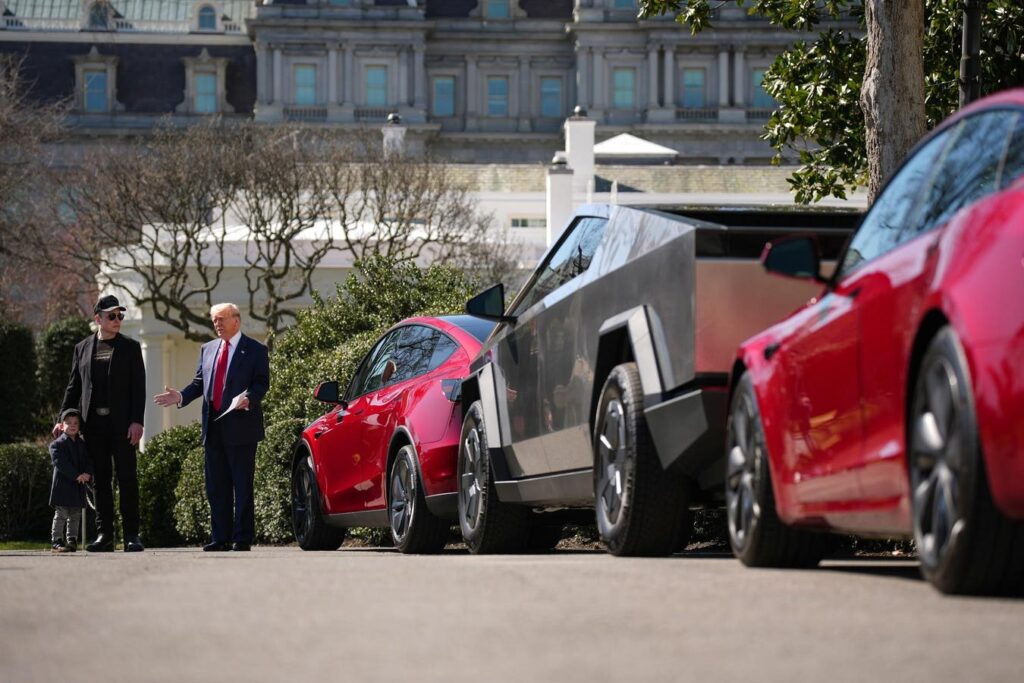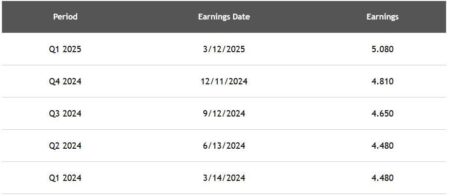Waning enthusiasm for electric vehicles in the U.S. has coincided with headline troubles for Tesla but the future for EVs looks solid although they won’t be the dominant force zealots have been passionately claiming anytime soon.
Expect Tesla to stop the fall in sales and stage a firm recovery.
EV sales in the U.S. are expected to inch higher in 2025 to 1.3 million, according to UBS data. That would mean a market share of 10.8% versus last year’s 10.4%. UBS expects steady market share growth, reaching 24% or 2.7 million by 2030. That assumes the Trump administration will see off the so-called California waiver, which allows states to set more stringent federal CO2 emissions standards. That would have boosted EV sales.
Auto Forecast Solutions expects U.S. EV market share to reach about 20% in 2030 and perhaps 30% in 2035.
This contrasts with an apparent upcoming boom in Europe, although this is based on government coercion rather than enthusiasm for EVs. Sales there are already close to the expected U.S. market share outcome for 2030, and the European Union has declared they will then account for about 80% of new sedan and SUV sales, 100% by 2035. If manufacturers fail to fulfill their mandated quotas, massive fines will result.
This means Europeans are effectively being forced to buy EVs as internal combustion engine vehicles become unaffordable because of the cost of cutting CO2 emissions to zero. Many experts reckon this EU plan is way too ambitious, and probably half the targets is a more likely outcome. There is growing political pressure in Europe to water down these quotas and extend 2035’s complete ban on the sale of new ICE vehicles, and allow synthetic gasoline.
AAA Survey Shows Little Enthusiasm For EVs
It’s just as well there are no similar laws in the U.S., given the results of a survey commissioned by the American Automobile Association. The survey of consumers said interest in EVs had sunk to its lowest level since 2019. Only 16% of respondents were “likely” or “very likely” to choose an EV the next time they bought a new car. The percentage of customers “unlikely” or “very unlikely” to buy an EV as their next vehicle rose to 63% from 51%, the highest since 2022.
Meanwhile Tesla’s sales have been falling in the U.S. and its shares have lost just over 25% of their value since late last year. This is because of a combination of factors. When Tesla was the new kid on the block, it was the entire market for EVs. But the competition has been sharpening up. Tesla’s 2 big sellers – the Model 3 and Model Y – have recently been updated, which interrupted production. Founder Elon Musk’s recent political involvement with the Trump administration has allegedly cost Tesla sales. This reporter wonders if any potential buyer would, after seriously examining all the choices, decide Tesla was the answer, then cancel the sale because of the owner’s politics.
Tesla’s market share in the U.S. has come under pressure but it still commands the EV sector from a great height. In 2024 its share slid to 48.7% from 55% the previous year, according to Cox Automotive’s Kelley Blue Book. The new contenders weren’t even close with Hyundai/Kia on 9.3%, then General Motors (8.7%), Ford (7.5%) and BMW (4.1%). In 2025’s first quarter GM spurted, more than doubling EV sales to over 30,000, passing Ford and Hyundai/Kia. Tesla sales were down 9%. At the same time, demand for hybrids and plug-in hybrids is diverting sales away from pure EVs.
“The Tesla Model 3 and Model Y continue to be the best-selling electric vehicles in the U.S. (in 2024) by a long margin, but both ageing models saw notable sales declines. Still, the Model Y and Model 3 still accounted for more than 40% of all EVs sold last year. The Ford Mustang Mach-E was the best-selling EV not made by Tesla, followed by the Hyundai Ioniq 5,” Cox Automotive said.
Tesla Sales Recovery Expected
Tesla’s problems are holding back EV sales but both will recover healthily, said GlobalData analyst David Oakley. He expects Tesla’s share of the overall U.S. market to steady at between 4 and 5% until the early 2030s, then increase to about 6%.
It was 3.95% in 2024, according to Kelley Blue Book
“I think it’s certainly true that a slowdown in Tesla sales has held back the EV sector as whole in the U.S. However, we do currently see Tesla sales being essentially flat in 2025 and then starting to grow again in 2026. We also have the EV share of the market growing slightly in 2025 before somewhat more robust growth in subsequent years,” Oakley said in an email exchange.
But that depends on consumer tax-credits remaining. If the credits are removed, growth beyond 2026 would be weakened.
“While our forecast currently has an EV share at 20.7% in 2028, up from 9.2% this year, there’s some considerable downside risk to that 2028 outlook. Also adding to that downside risk is the potential repealing of various emissions and fuel economy requirements, meaning that (manufacturers) could be significantly less motivated to develop EVs for the U.S. market,” Oakley said.
All those seem destined to disappear, subject to legal appeals.
Bernstein Research agreed American excitement over EVs has cooled in recent months, although market share will soon reach into the lower teens.
Dire Tariff Implications
“The current focus of the market however, is the automotive tariffs and emerging trade war. While there are dire implications for the wider sector, we think that regardless of the tariff outcome, the U.S. will further slow EV growth. The cost pressures rising tariffs will put on the U.S. industry will reduce the available funding for loss-making EV businesses, limit investments, and pull executives’ attention into other directions,” Bernstein Research said in a research note.
Investors await Tesla’s decision on the future of its range now the huge selling Model 3 and Y have been updated. The media has been full of conflicting reports about Musk’s plans to make a smaller Model 2, which would be priced at around $25,000, about $15,000 below the starting price for the 3. The low cost, mass-market project is seen as an inevitable move if Tesla is to expand. Reports have said Tesla is weighing up the possibility of making it a stripped-down 3, or an all new smaller 2. They expect the pricey and niche Model S sedan and X SUV to continue.
GlobalData’s Oakley said Musk’s political involvement might have alienated some buyers, but could have attracted others.
“It now appears that Musk is taking a step back from politics, so we may never really know what the impact was. I think it could be true to say that there’s been a sense that Tesla has been drifting recently as Musk’s attention has mainly been elsewhere, but it isn’t in some kind of downward spiral in my opinion,” Oakley said.
Read the full article here
















